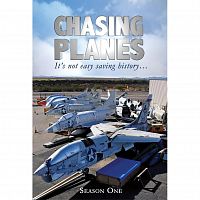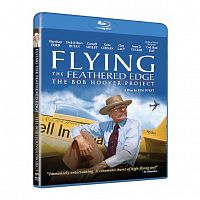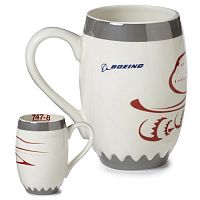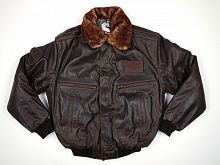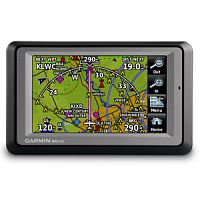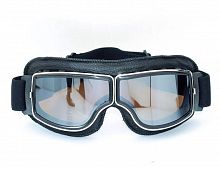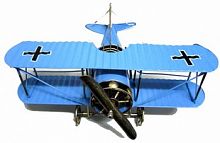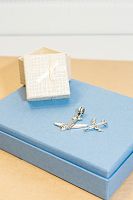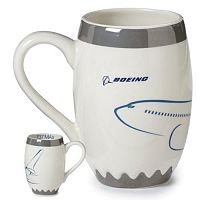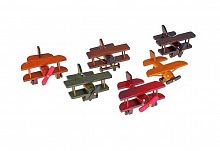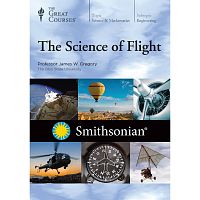-
Ваш город:
- Вход
- Регистрация
-
+7 (812) 777-72-71 Заказать звонокСообщение отправленоВаше сообщение успешно отправлено. В ближайшее время с Вами свяжется наш специалистЗакрыть окно
-
Избранное Нет товаров
-
Сравнение Нет товаров
-
Моя корзина 0 В корзине пусто
Science of Flight (DVD)
Описание товара
From The Great Courses and the SmithsonianMany people – even pilots – board an airliner without understanding what a truly extraordinary experience flight is: suspended 30,000 feet or more in the air, propelled to our destination at close to the speed of sound, protected from extreme cold and low pressure by the thin skin of the aircraft. We realize it’s complicated, but few of us know how it really works. Even more remarkable is space flight, the “rocket science” that we use as a benchmark of difficulty or complexity.Yet the related principles of atmospheric flight and space flight are not difficult at all, and the study of these two miracles of modern engineering is a wide-ranging lesson in physics, technology, and history. No organization is more authoritative on this subject than the Smithsonian National Air and Space Museum (NASM) and its annex, the Udvar-Hazy Center. Together, they host the world’s premier collections of air and space artifacts and the home to some of the most distinguished scholars in the field.The Great Courses has joined forces with the Smithsonian to explain flight as it’s never been explained before. In 24 visually rich half-hour lectures, The Science of Flight covers the inner workings of gliders, airplanes, helicopters, rockets, spacecraft, and other flying machines, illustrated by the incomparable holdings of NASM and with commentary by the museum’s internationally renowned curators. It’s a fascinating tour for pilots and non-pilots alike.The Science of Flight is taught by award-winning educator James W. Gregory, Professor of Mechanical and Aerospace Engineering at The Ohio State University. An instrument-rated private pilot as well as an engineer, Professor Gregory gives as thorough an explanation of the principles of flight, rocketry, and related topics as you’ll get outside of flight school. Throughout, his beautifully clear lectures are supplemented by incisive commentary from NASM experts, who put everything from airfoils to orbits into a fascinating historical context.The more than one dozen curators and other NASM staff featured in this course include:• Tom Crouch: The Senior Curator of Aeronautics at NASM, Dr. Crouch surveys the celebrated early days of aviation. A noted historian, he is the author of a bestselling biography of the Wright brothers.• John D. Anderson, Jr.: Serving as technical consultant for the course, Dr. Anderson is the Curator of Aerodynamics at NASM. He draws on his love of aviation engineering history to illuminate pioneering breakthroughs in the field.• Dorothy Cochrane: NASM’s Curator of General Aviation, Cochrane focuses on the feats of extraordinary civilian pilots, including aerobatic champions and record-breaking long-distance fliers.• Roger Launius: The Senior Curator of Space History at NASM and formerly Chief Historian for NASA, Dr. Launius predicts the future of space travel, weighing past exploits and present plans.And this is just some of the remarkable talent assembled for this course.Think Like an Aeronautical EngineerAviation has advanced hand-in-hand with our growing understanding of the physics of flight—what causes lift, how to reduce drag, the complex events in the transonic realm. This makes NASM the ideal laboratory for explaining revolutionary milestones—from the three-axis control system of the original Wright Flyer that made winged flight practical; to the supercharged Rolls Royce Merlin engine that gave the P-51 Mustang a winning edge in World War II; to the thermal tile system that allowed the Space Shuttle to survive dozens of reentries from space.In The Science of Flight, Professor Gregory delves deeply into these and many other developments, explaining how they work at a fundamental level, down to the equations that govern such phenomena as wing loading, parasitic drag, induced drag, power in a reciprocating engine, and thrust in a jet or rocket engine. Using almost no higher mathematics than high-school-level algebra, Dr. Gregory demonstrates how aeronautical engineers think, analyzing forces to predict exactly what will happen with a particular airfoil, structural material, power plant, and scores of other design features.Such an inquiring attitude will pay off next time you’re in the air, alerting you to intriguing observations like these:Lift made visible: Watch the wing as you accelerate down the runway. As lift builds, you will see the wing bend upward. On large aircraft made of composite materials, such as the Boeing 787, the deflection can be substantial, as much as twelve feet at the wing tip!Wing origami: The sound of hydraulic actuators is your clue to look out the window and observe the wing dramatically change shape prior to landing. By deploying slats on the leading edge and flaps on the trailing edge, higher lift is produced for a safe landing at a relatively low speed.A shocking sight: Supersonic flight is hampered by the formation of shock waves that constitute the notorious “sound barrier.” Under the right lighting, you can see the shadow of a shock wave on the wing of a passenger jet cruising at a four-fifths of the speed of sound.Breathtaking: Commercial jets fly at an altitude that would challenge human survival if the plane was not pressurized. However, the cabin is not set to sea-level pressure but to the equivalent of a high-elevation city such as Santa Fe or Mexico City. This can cause shortness of breath for some passengers.Let Your Understanding of Flight Take Wing!One big advantage of taking the engineer’s approach to understanding flight is that it clears up common misconceptions. For example, a frequently heard explanation of lift is that air rushing past a wing has farther to go along the curved upper surface than along the flat underside. According to this view, the top flow of air must go faster to “catch up” with air directed along the bottom. Faster-moving air equals lower pressure, which equals lift. The last sentence is correct, but the rest of the explanation is wrong—as shown by the existence of symmetrical airfoils and planes that fly upside-down.To get at the real origin of lift, Professor Gregory uses conservation of mass and momentum, a garden-hose analogy, and a standard illustration of smoke streamlines around an airfoil. In subsequent lectures, he employs the same ideas to explore drag. And when it comes to discussing the potentially fatal interplay of lift and drag known as stall, Dr. Gregory takes his private plane aloft and demonstrates an actual stall, explaining why it happens and showing how to recover from it.Like driver education classes, flight schools frequently warn students with accounts of preventable mishaps such as pilot errors, icing incidents, fueling mistakes, unrecognized design flaws, and other conditions that have led to harrowing landings and often tragedies. Dr. Gregory recounts several memorable cases, underlining how knowledge is power in reducing such incidents.But along with the cautionary tales, he and his NASM collaborators provide plenty of uplifting stories of pilots, astronauts, and engineers who mastered their craft and achieved wonders in air and space. Thanks to Professor Gregory and the Smithsonian, the drama, romance, and science of this incomparable endeavor truly take wing in The Science of Flight.Additionally, you’ll receive five bonus interviews with NASM experts, providing further insights into the subjects explored throughout the course. You will hear Dr. John Anderson delve into Gustave Eiffel's wind tunnels, the Wright Flyer, and the science of engineering faster flights. Dr. Tom Crouch explores the Wright Brothers’ and innovation, and Dr. Roger Launius dives into the inventive new ways we are working to fly higher, faster, and further.DVD course includes 4 discs, 312-page printed course guidebook, and more.
Характеристики:
| Прочие | ||
| Источник | Sportys | |
Похожие товары (8)
Science of Flight (DVD)
Сообщение отправлено
Ваше сообщение успешно отправлено. В ближайшее время с Вами свяжется наш специалист
Закрыть окно
 Каталог товаров
Каталог товаров













 В корзину
В корзину Купить в 1 клик
Купить в 1 клик
 Нашли дешевле
Нашли дешевле Рассчитать доставку
Рассчитать доставку Под заказ
Под заказ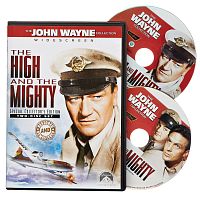
 К сравнению
К сравнению В избранное
В избранное

